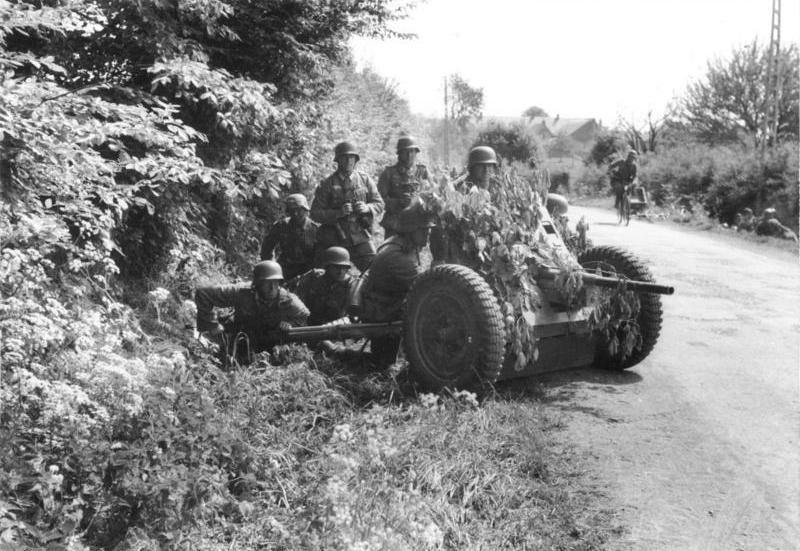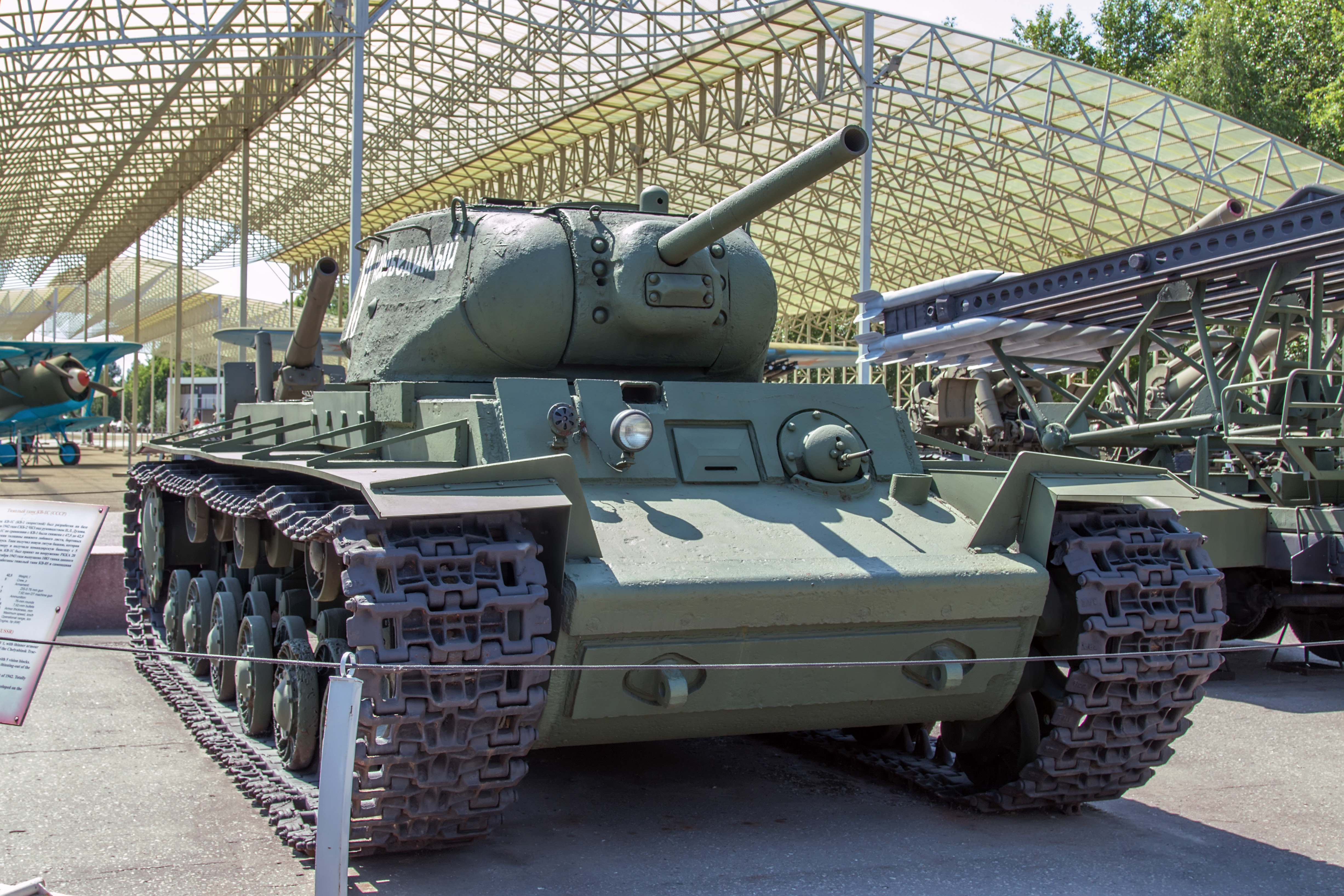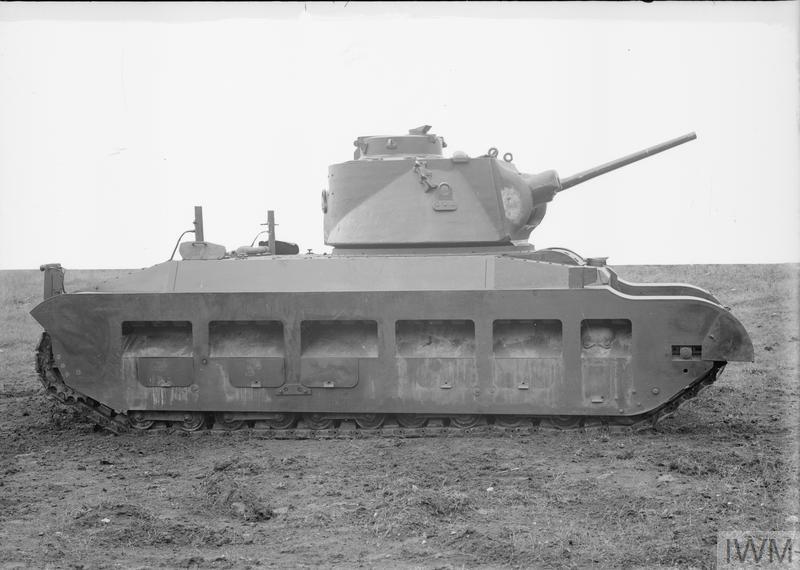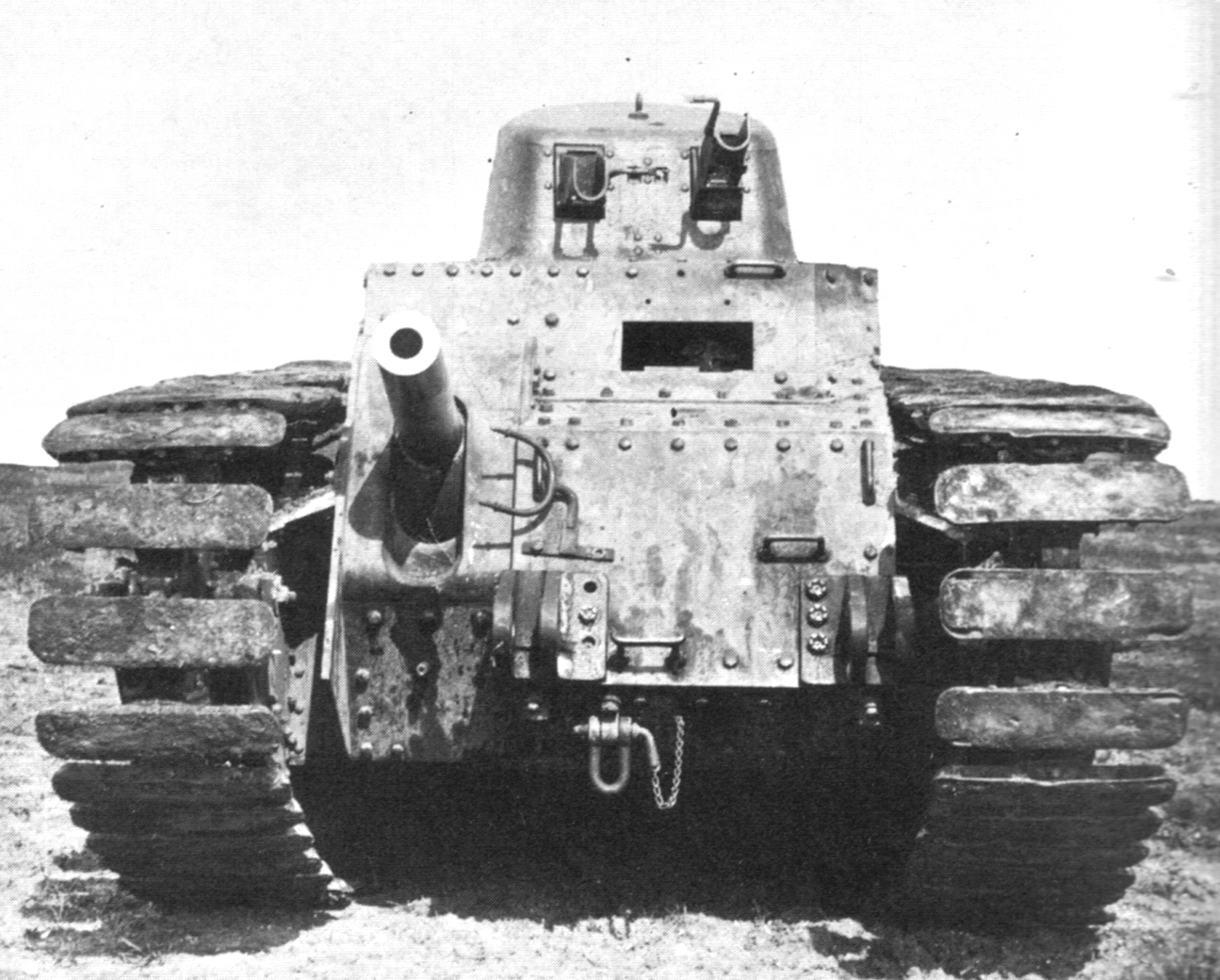|
3.7 cm PaK 36
The Pak 36 (''Panzerabwehrkanone 36'') is a 3.7 cm / 37mm caliber German anti-tank gun used during the Second World War. It was the main anti-tank weapon of Wehrmacht ''Panzerjäger'' units until 1942. Developed by ''Rheinmetall'' in 1933, it was first issued to the German Army in 1936, with 9,120 being available by the beginning of the war in September 1939 and a further 5,339 produced during the war. As the predominant anti-tank gun design in the world during the late 1930s, demand was high for the Pak 36, with another 6,000 examples produced for export and the design being copied by the Soviet Union as the 45 mm anti-tank gun M1932 (19-K) and by other nations such as Japan. It first saw service during the Spanish Civil War in 1936, where it performed well against the light tanks of the conflict. It was first used during the Second World War against Poland in 1939 and had little difficulty with any of the Polish tanks. The Battle of France in 1940 revealed its inadequate ... [...More Info...] [...Related Items...] OR: [Wikipedia] [Google] [Baidu] |
Nazi Germany
Nazi Germany (lit. "National Socialist State"), ' (lit. "Nazi State") for short; also ' (lit. "National Socialist Germany") (officially known as the German Reich from 1933 until 1943, and the Greater German Reich from 1943 to 1945) was the German state between 1933 and 1945, when Adolf Hitler and the Nazi Party controlled the country, transforming it into a dictatorship. Under Hitler's rule, Germany quickly became a totalitarian state where nearly all aspects of life were controlled by the government. The Third Reich, meaning "Third Realm" or "Third Empire", alluded to the Nazi claim that Nazi Germany was the successor to the earlier Holy Roman Empire (800–1806) and German Empire (1871–1918). The Third Reich, which Hitler and the Nazis referred to as the Thousand-Year Reich, ended in May 1945 after just 12 years when the Allies defeated Germany, ending World War II in Europe. On 30 January 1933, Hitler was appointed chancellor of Germany, the head of gove ... [...More Info...] [...Related Items...] OR: [Wikipedia] [Google] [Baidu] |
Soviet Union
The Soviet Union,. officially the Union of Soviet Socialist Republics. (USSR),. was a transcontinental country that spanned much of Eurasia from 1922 to 1991. A flagship communist state, it was nominally a federal union of fifteen national republics; in practice, both its government and its economy were highly centralized until its final years. It was a one-party state governed by the Communist Party of the Soviet Union, with the city of Moscow serving as its capital as well as that of its largest and most populous republic: the Russian SFSR. Other major cities included Leningrad (Russian SFSR), Kiev (Ukrainian SSR), Minsk ( Byelorussian SSR), Tashkent (Uzbek SSR), Alma-Ata (Kazakh SSR), and Novosibirsk (Russian SFSR). It was the largest country in the world, covering over and spanning eleven time zones. The country's roots lay in the October Revolution of 1917, when the Bolsheviks, under the leadership of Vladimir Lenin, overthrew the Russian Provisional Government ... [...More Info...] [...Related Items...] OR: [Wikipedia] [Google] [Baidu] |
Stielgranate 41
The Stielgranate 41 (German: "stick grenade"; model 1941) was a German shaped charge, fin-stabilized shell, used with the 3.7 cm Pak 36 anti-tank gun to give it better anti-tank performance. The 3.7 cm PaK-36, was the standard anti-tank gun of the Wehrmacht in 1940. During the battle of France in 1940 it had trouble dealing with thick armour of French and British tanks. In 1941, when Germany invaded the USSR, the gun was next to useless when confronted with Russian T-34 or KV-series tanks. It was successively replaced by larger calibre weapons, like the 5 cm PaK 38, but there were never enough of them, so it was decided to enhance the capability of the PaK 36 by providing it with new ammunition. The design looked like a rifle grenade, only considerably larger. One part of its stem, a stick, was placed inside the gun barrel; the other part, a perforated tube, fitted around it. On the tube there were six stabilizing fins. It was shot with a special blank cartridge at a v ... [...More Info...] [...Related Items...] OR: [Wikipedia] [Google] [Baidu] |
KV-1
The Kliment Voroshilov (KV) tanks are a series of Soviet heavy tanks named after the Soviet defence commissar and politician Kliment Voroshilov who operated with the Red Army during World War II. The KV tanks were known for their heavy armour protection during the early stages of the war, especially during the first year of the German invasion of the Soviet Union. In certain situations, even a single KV-1 or KV-2 supported by infantry could halt German formations. The German ''Wehrmacht'' at that time rarely deployed its tanks against KVs, as their own armament was too poor to deal with the "''Russischer Koloss''" – "Russian Colossus". The KV tanks were practically immune to the 3.7 cm KwK 36 and howitzer-like, short-barreled 7.5 cm KwK 37 guns mounted, respectively, on the early Panzer III and Panzer IV tanks fielded by the invading German forces. Until the Germans developed more effective guns, the KV-1 was invulnerable to almost any German weapon except the 8.8 cm Flak gun. ... [...More Info...] [...Related Items...] OR: [Wikipedia] [Google] [Baidu] |
T-34
The T-34 is a Soviet medium tank introduced in 1940. When introduced its 76.2 mm (3 in) tank gun was less powerful than its contemporaries while its 60-degree sloped armour provided good protection against Anti-tank warfare, anti-tank weapons. The Christie suspension was inherited from the design of American J. Walter Christie's M1928 tank, versions of which were sold turret-less to the Red Army and documented as "farm tractors", after being rejected by the U.S. Army. The T-34 had a profound effect on the conflict on the Eastern Front (World War II), Eastern Front in the World War II, Second World War, and had a short lasting impact on tank design. After the Germans encountered the tank in 1941 during Operation Barbarossa, German general Paul Ludwig Ewald von Kleist called it "the finest tank in the world" and Heinz Guderian affirmed the T-34's "vast superiority" over German tanks. Alfred Jodl, chief of operations staff of the German armed forces noted in his war diar ... [...More Info...] [...Related Items...] OR: [Wikipedia] [Google] [Baidu] |
Operation Barbarossa
Operation Barbarossa (german: link=no, Unternehmen Barbarossa; ) was the invasion of the Soviet Union by Nazi Germany and many of its Axis allies, starting on Sunday, 22 June 1941, during the Second World War. The operation, code-named after Frederick Barbarossa ("red beard"), a 12th-century Holy Roman emperor and German king, put into action Nazi Germany's ideological goal of conquering the western Soviet Union to repopulate it with Germans. The German aimed to use some of the conquered people as forced labour for the Axis war effort while acquiring the oil reserves of the Caucasus as well as the agricultural resources of various Soviet territories. Their ultimate goal was to create more (living space) for Germany, and the eventual extermination of the indigenous Slavic peoples by mass deportation to Siberia, Germanisation, enslavement, and genocide. In the two years leading up to the invasion, Nazi Germany and the Soviet Union signed political and economic pacts for st ... [...More Info...] [...Related Items...] OR: [Wikipedia] [Google] [Baidu] |
Allies Of World War II
The Allies, formally referred to as the United Nations from 1942, were an international military coalition formed during the Second World War (1939–1945) to oppose the Axis powers, led by Nazi Germany, Imperial Japan, and Fascist Italy. Its principal members by 1941 were the United Kingdom, United States, Soviet Union, and China. Membership in the Allies varied during the course of the war. When the conflict broke out on 1 September 1939, the Allied coalition consisted of the United Kingdom, France, and Poland, as well as their respective dependencies, such as British India. They were soon joined by the independent dominions of the British Commonwealth: Canada, Australia, New Zealand and South Africa. Consequently, the initial alliance resembled that of the First World War. As Axis forces began invading northern Europe and the Balkans, the Allies added the Netherlands, Belgium, Norway, Greece, and Yugoslavia. The Soviet Union, which initially had a nonaggression pa ... [...More Info...] [...Related Items...] OR: [Wikipedia] [Google] [Baidu] |
Matilda II
The Infantry Tank Mark II, best known as the Matilda, was a British infantry tank of the Second World War.Jentz, p. 11. The design began as the A12 specification in 1936, as a gun-armed counterpart to the first British infantry tank, the machine gun armed, two-man A11 Infantry Tank Mark I. The Mark I was also known as Matilda, and the larger A12 was initially known as the Matilda II or Matilda senior. The Mark I was abandoned in 1940, and from then on the A12 was almost always known simply as "the Matilda". With its heavy armour, the Matilda II was an excellent infantry support tank but with somewhat limited speed and armament. It was the only British tank to serve from the start of the war to its end, although it is particularly associated with the North Africa Campaign. Only two were available for service by the outbreak of the World War II in 1939. It was replaced in front-line service by the lighter and less costly Infantry Tank Mk III Valentine beginning in late 1941. D ... [...More Info...] [...Related Items...] OR: [Wikipedia] [Google] [Baidu] |
Char B1
The Char B1 was a French heavy tank manufactured before World War II. The Char B1 was a specialised break-through vehicle, originally conceived as a self-propelled gun with a 75 mm howitzer in the hull; later a 47 mm gun in a turret was added, to allow it to function also as a , a "battle tank" fighting enemy armour, equipping the armoured divisions of the Infantry Arm. Starting in the early twenties, its development and production were repeatedly delayed, resulting in a vehicle that was both technologically complex and expensive, and already obsolescent when real mass-production of a derived version, the Char B1 "bis", started in the late 1930s. A further up-armoured version, the Char B1 "ter", was only built in two prototypes. Among the most powerfully armed and armoured tanks of its day, the type was very effective in direct confrontations with German armour in 1940 during the Battle of France, but low speed and high fuel consumption made it ill-adapted to the ... [...More Info...] [...Related Items...] OR: [Wikipedia] [Google] [Baidu] |
Battle Of France
The Battle of France (french: bataille de France) (10 May – 25 June 1940), also known as the Western Campaign ('), the French Campaign (german: Frankreichfeldzug, ) and the Fall of France, was the Nazi Germany, German invasion of French Third Republic, France during the Second World War. On 3 September 1939, France French declaration of war on Germany (1939), declared war on Germany following the German invasion of Poland. In early September 1939, France began the limited Saar Offensive and by mid-October had withdrawn to their start lines. German armies German invasion of Belgium (1940), invaded Belgium, German invasion of Luxembourg, Luxembourg and German invasion of the Netherlands, the Netherlands on 10 May 1940. Fascist Italy (1922-1943), Italy entered the war on 10 June 1940 and attempted an Italian invasion of France, invasion of France. France and the Low Countries were conquered, ending land operations on the Western Front (World War II), Western Front until the Normandy l ... [...More Info...] [...Related Items...] OR: [Wikipedia] [Google] [Baidu] |
Invasion Of Poland
The invasion of Poland (1 September – 6 October 1939) was a joint attack on the Republic of Poland by Nazi Germany and the Soviet Union which marked the beginning of World War II. The German invasion began on 1 September 1939, one week after the signing of the Molotov–Ribbentrop Pact between Germany and the Soviet Union, and one day after the Supreme Soviet of the Soviet Union had approved the pact. The Soviets invaded Poland on 17 September. The campaign ended on 6 October with Germany and the Soviet Union dividing and annexing the whole of Poland under the terms of the German–Soviet Frontier Treaty. The invasion is also known in Poland as the September campaign ( pl, kampania wrześniowa) or 1939 defensive war ( pl, wojna obronna 1939 roku, links=no) and known in Germany as the Poland campaign (german: Überfall auf Polen, Polenfeldzug). German forces invaded Poland from the north, south, and west the morning after the Gleiwitz incident. Slovak military forces ad ... [...More Info...] [...Related Items...] OR: [Wikipedia] [Google] [Baidu] |




.jpg)




